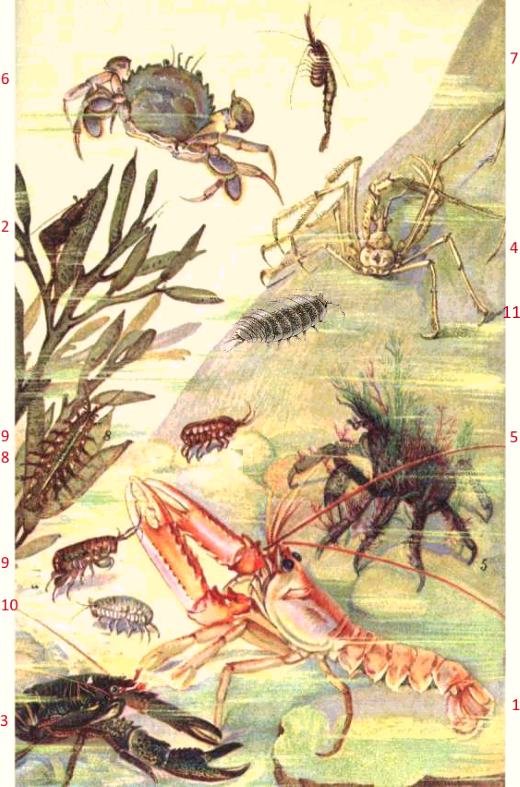The sea slater
The sea slater has a dangerous live
These animals lives in the supra littoral zone and are having a difficult live live in the supralitoral world changes fast: The sea slater is sometimes submerged by the tide and the waves. There is a danger of getting diseccated because the sea slater has gills, sunshine and strong winds can evaporate the bodt fluids quickly. Rain can bring a sudden osmotic stress. Cold temperatures can be found during wintertime, ice cristals can damage the gills.The sea slater lives in cracks
To avoid the dangerous conditions, but also predators, the sea slater hides in cracks in the rocks. It has an nocturnal live, feeding and mating at night.The sea slater feeds on seaweed
The sea slater feeds on every seaweed that can be found in the supra littoral, it is especially fond of bladderwrack.
The sea slater changes color
These little animals are very well camouflaged, they have a flattened shape so the skirts of their armour plates are pressed close to the ground and they cast no shadow on the rocks. They also have the ability to change slowly from color.predators of the sea slater
Crabs and gulls prey on them. To avoid being eaten, seaslaters have adapted to a nocturnal live and use there big eyes.
Slaters and crustaceans from the Northsea
From:"Der Strandwanderer" by P. Kuckuck. 1905
1 Norway Lobster or Nephrops norvegicus
2 Chameleon Shrimp or Hippolyte varians
3 black squat lobster or Montagu's Plated Lobster or Galathea squamifera
4 Common Spider Crab or Macropodia rostrata
5 Great Spider Crab or Hyas araneus
6 Common Swimming Crab or Liocarcinus holsatus
7 chameleon shrimp or Praunus flexuosus
8 Idotea balthica
9 Beach-hopper or Orchestia gammarellus
10 Sand hopper or Talitrus saltator
11 seaslater
